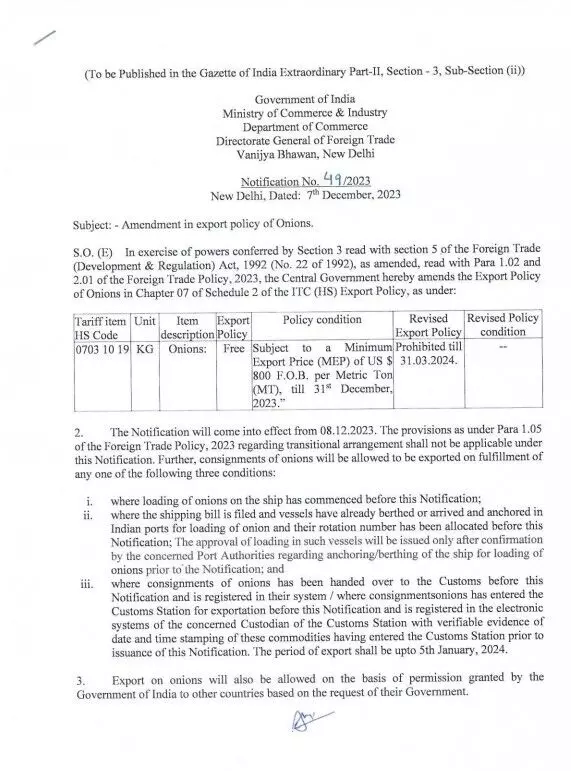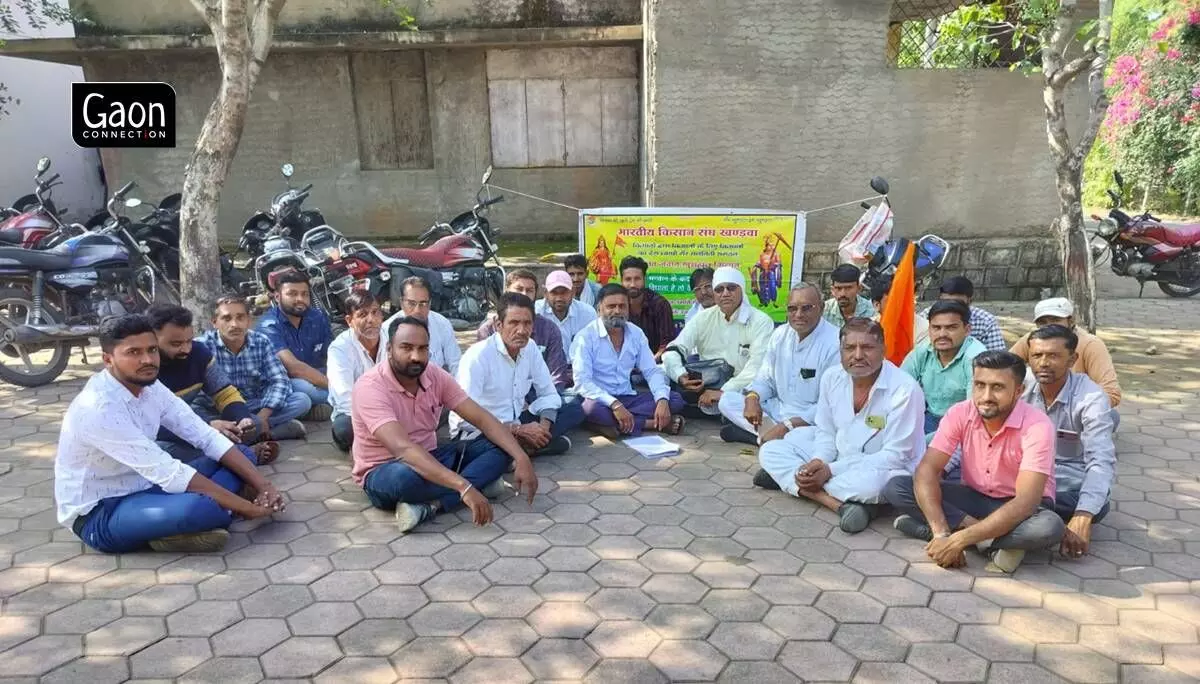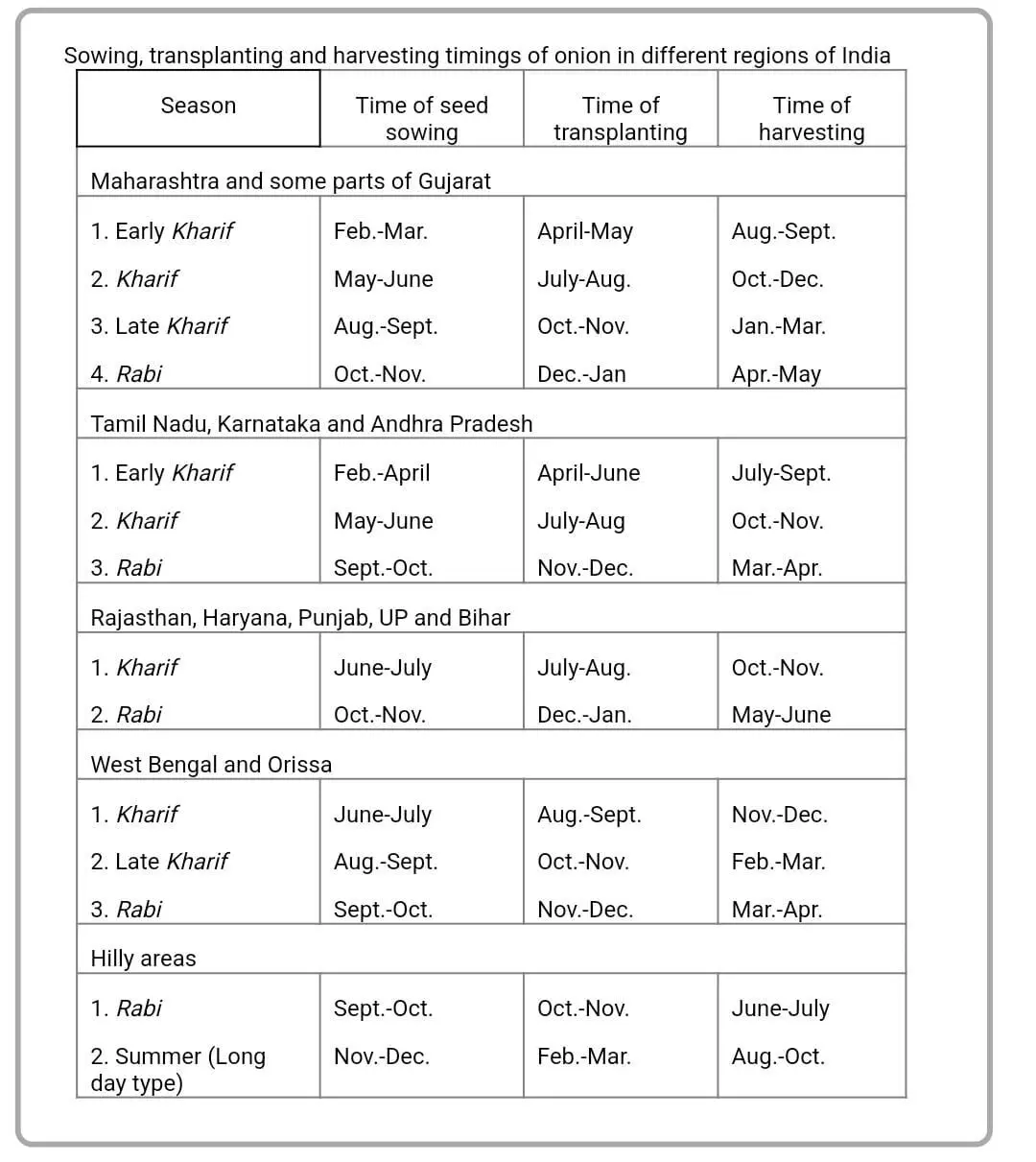Khandwa, Madhya Pradesh
Sundar Patel sowed onions on 13 acres of land spending more than nine lakh rupees (Rs 900,000) on it. The 41-year-old farmer from Pokhar Kala village in Khandwa district was expecting profits worth Rs 10,00,000 since onions were fetching a good price in the market.
But an immediate ban imposed on the export of onion has left him unable to even recover the investment on his crop, the farmer from Madhya Pradesh lamented.
On December 7, last week, the Directorate General of Foreign Trade (DGFT), under the Ministry of Commerce & Industry, issued a notification prohibiting the export of onions with immediate effect till March 31, 2024. The notification came into effect the next day, December 8.
Earlier, in August this year, the government had curbed the export of onion by levying a 40 per cent tax on the export of onion, which was to be applicable till December 31, 2023. With the new notification, the export of onion has now been ‘prohibited’ till March next year.

These decisions of the Indian government are significant as India is the largest exporter of onions in the world.
Whereas the export prohibition has brought down onion prices in the country — the prices plummeted from Rs 50 per kilogramme in Khandwa to Rs 18 per kilo the very next day after the ban announcement — it has left onion farmers teary-eyed as they are staring at heavy financial losses. Exporting their crop helps them fetch better prices.
“An acre of field yields around 70 quintals of onion. Before the export ban, the price of onion was Rs 50 per kilo in the wholesale market. But these days, the price is hovering around Rs 15 per kilo. The best quality onion is being sold at Rs 35 which used to be sold at Rs 70. Imagine our situation,” Patel, the farmer from Khandwa, told Gaon Connection (1 quintal= 100 kgs).
He demanded that onion farmers should be able to get a price of Rs 35 per kilo at least.
“The government shouldn’t get too cosy after the results of the assembly elections. If farmers can make governments, we can send them packing too. The Lok Sabha elections are close,” the 41-year-old said angrily.
Thousands of farmers like Patel are protesting in onion-producing hubs like Madhya Pradesh’s Khandwa and Maharashtra’s Nashik and Satara districts.
A delegation of farmers in Khandwa has submitted a memorandum on December 11 to the district collector and demanded that the ban on export be lifted.

Anoop Singh, the district collector of Khandwa, told Gaon Connection that he has received the memorandum from the onion farmers. “The memorandum is addressed to the Prime Minister. I will forward the request to the higher authorities,” he said.
“Onion production is a major economic activity in Khandwa and the annual production of the district is about 2,00,000 metric tonnes,” said the district collector.
Traders are also supporting the farmers’ agitation. Ramchandra Hirani, an onion trader from Khandwa, told Gaon Connection that the government is working against the interests of the farmers.
“Is this how the government wishes to increase farmers’ incomes? Why punish the farmer if the prices in the market are high? These farmers who have invested heavily in onion production will now be in debt as their investments have failed. Will that not affect the economy? The government should think of holistic solutions and avoid knee-jerk reactions to economic issues,” Hirani said.
Exporters fear that the ban will put their years of commercial relations with offshore buyers at peril.
“We try to be punctual with our deliveries and consistent with our supplies but when the government makes such decisions, it reflects badly on our ability to supply the world market,” Mohammad Maaz, a Nashik-based exporter in Maharashtra, told Gaon Connection. Maharashtra state is the leading producer of onions in India.
“The government should consider that India is the biggest exporter of onions and more countries are vying to take India’s share from world trade,” he said.
“Countries like Turkey, Iran and Iraq also produce good quality onions. The demand will always be there whether India supplies or not. These countries will rise to fill in the gap created by the export ban in India,” the exporter added.
Onion Production and Export in India
According to a press statement issued by the Union Agriculture Ministry on March 7, 2023, Maharashtra is the leading producer of onion with a share of around 43 per cent, while Madhya Pradesh is the second biggest contributor with 16 per cent share.
Karnataka and Gujarat contribute around nine per cent of the national production. India produces about 30 million tonnes of onions every year.
According to the Agricultural and Processed Food Products Export Development Authority, the biggest importers of India’s onion are Bangladesh, Malaysia, United Arab Emirates, Sri Lanka, and Nepal.
In 2022-23, India exported 2,525,258.38 metric tonnes of onions.
Table: Onion Cultivation in India

Source: Indian Council of Agricultural Research (ICAR)
Unseasonal rainfall has further added to the woes of onion farmers. Subhash Patel, vice president of the Bharatiya Kisan Sangh in Khandwa told Gaon Connection that adverse weather and heavy rainfall in the last week of November had prevented farmers from harvesting their produce and the ban didn’t allow them enough time to sell their produce at higher rates.
“The entire supply chain is paralysed. The traders who had bought stocks of onion are not buying anymore. The farmers have an understanding with the traders when they sow onions. That understanding is in jeopardy due to the export ban,” said Subhash Patel.
“This decision seems to be targeted against the farmers. What was the hurry? The government should have provided some time window for this harvest to be sold,” he added.
“They waited for the state assembly elections to conclude before imposing the ban. It is a betrayal to the farming community. We will not tolerate such a betrayal,” he lashed out.
Last month, Gaon Connection had reported that the adversely changing climate was affecting farmers who are facing a loss of several billions of dollars due to export curbs and other trade restrictions.
Gaon Connection took note of a 2022 report by Organisation for Economic Co-operation and Development (OECD) which documented that last year, Indian farmers were taxed 169 billion US dollars (Rs 1.352 billion) in the garb of export bans, duties or permits on commodities like wheat and rice — to stabilise prices for consumers.
‘Decision is political’ – farm leaders
Ajit Nawale, the general secretary of All India Kisan Sabha in Maharashtra, told Gaon Connection that the government’s decision to ban onion export is in line with its alleged agenda of subsiding the middle class at the expense of the farmers.
“There’s no doubt that it’s an anti-farmer government. Why should the farmer pay from their pocket if the food prices are high? The mandis are at a standstill and the farmers don’t know what to do,” Nawale said.
Rajan Kshirsagar, the state head of the All India Kisan Sabha said that these measures are deliberately taken to make farming difficult for the farmers.
“The government wants to corporatise farming in India and small farmers are expected to quit agriculture. After the three farm laws were repealed, the government is now trying to privatise agriculture by creating problems for the farming community,” alleged Kshirsagar.
“Why don’t they intervene when the market prices are too low? Why is it that measures are always taken to bring down the prices? Why should the farmers subsidise the consumers,” he demanded to know.
With inputs from Pratyaksh Srivastava



















